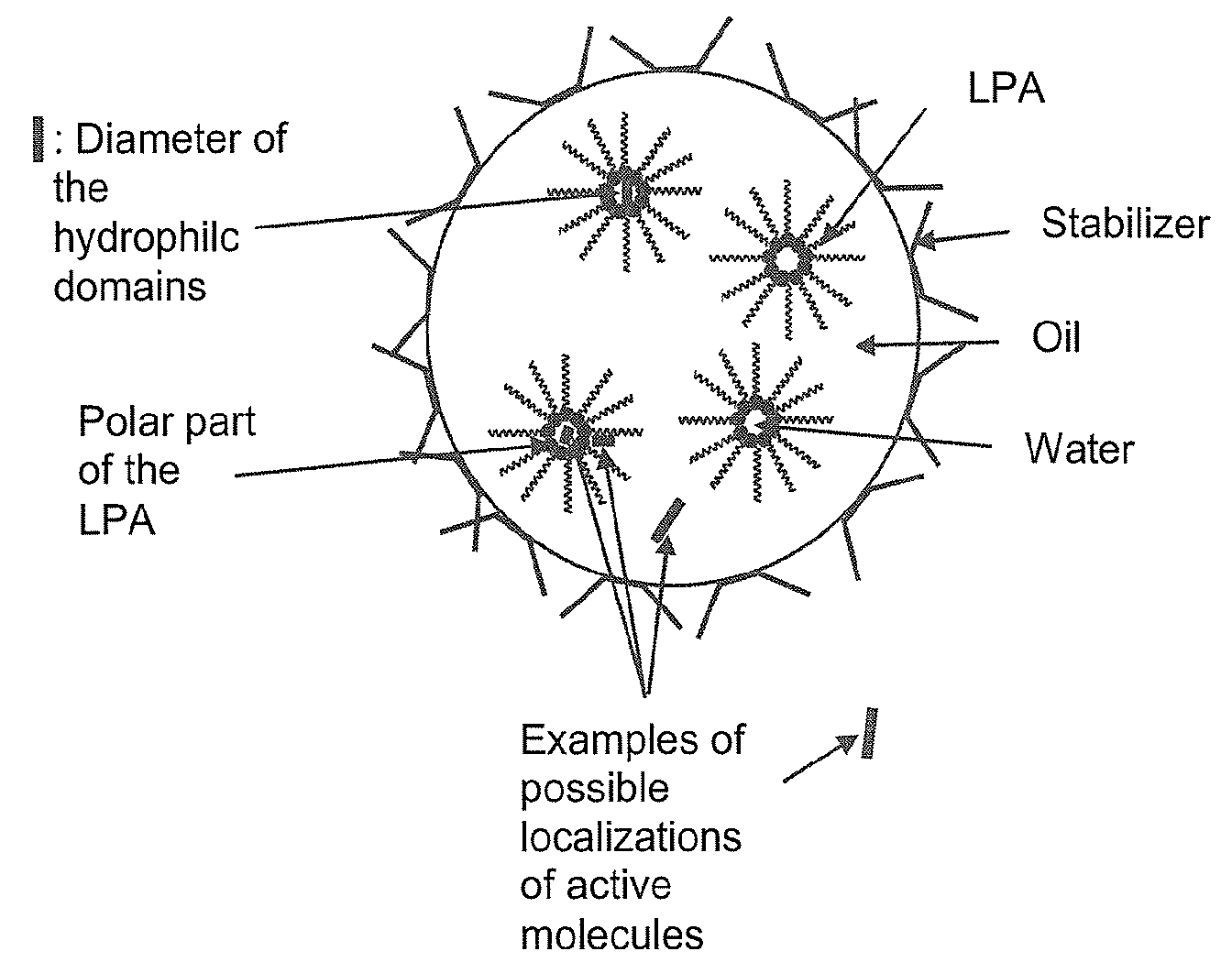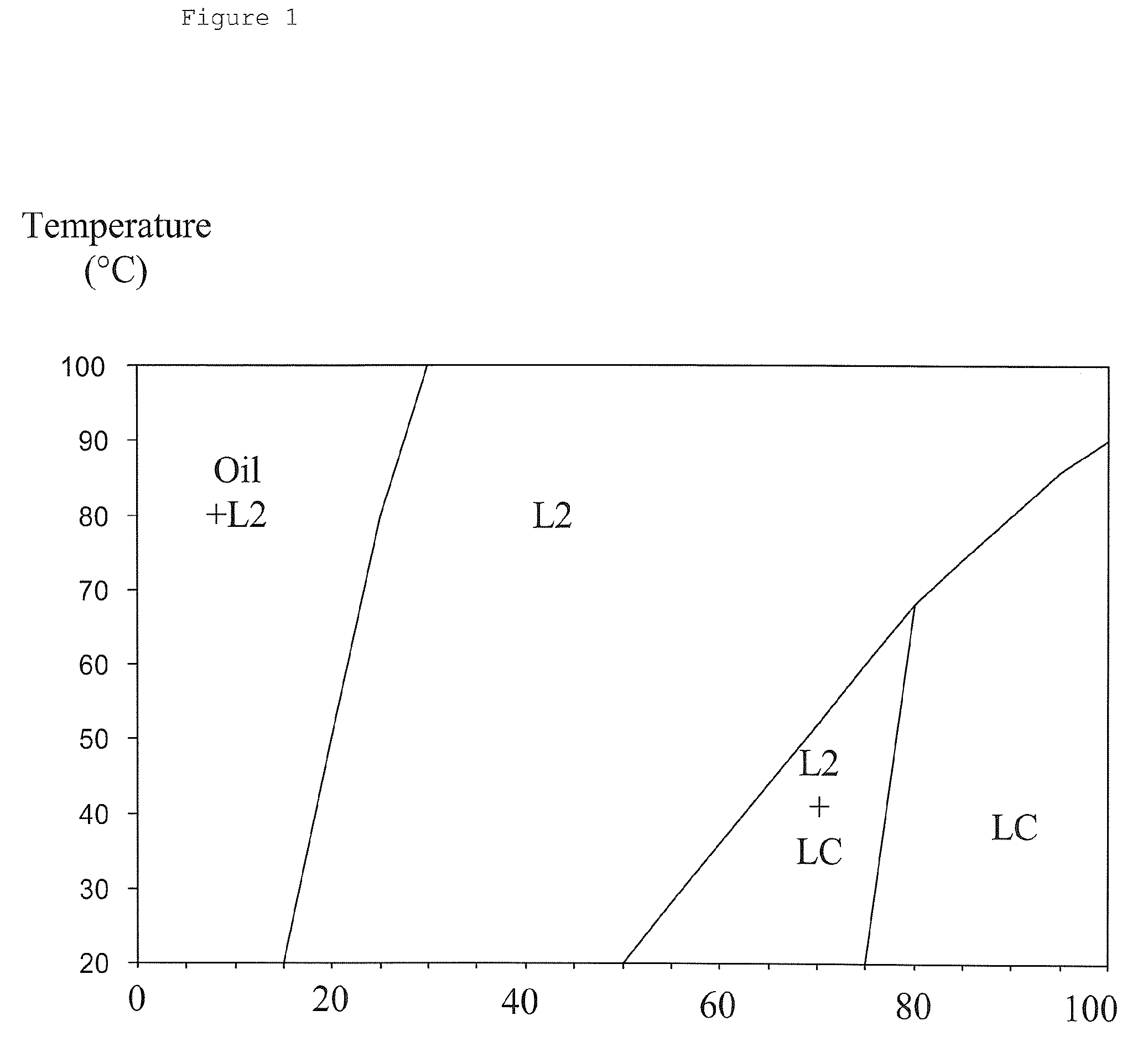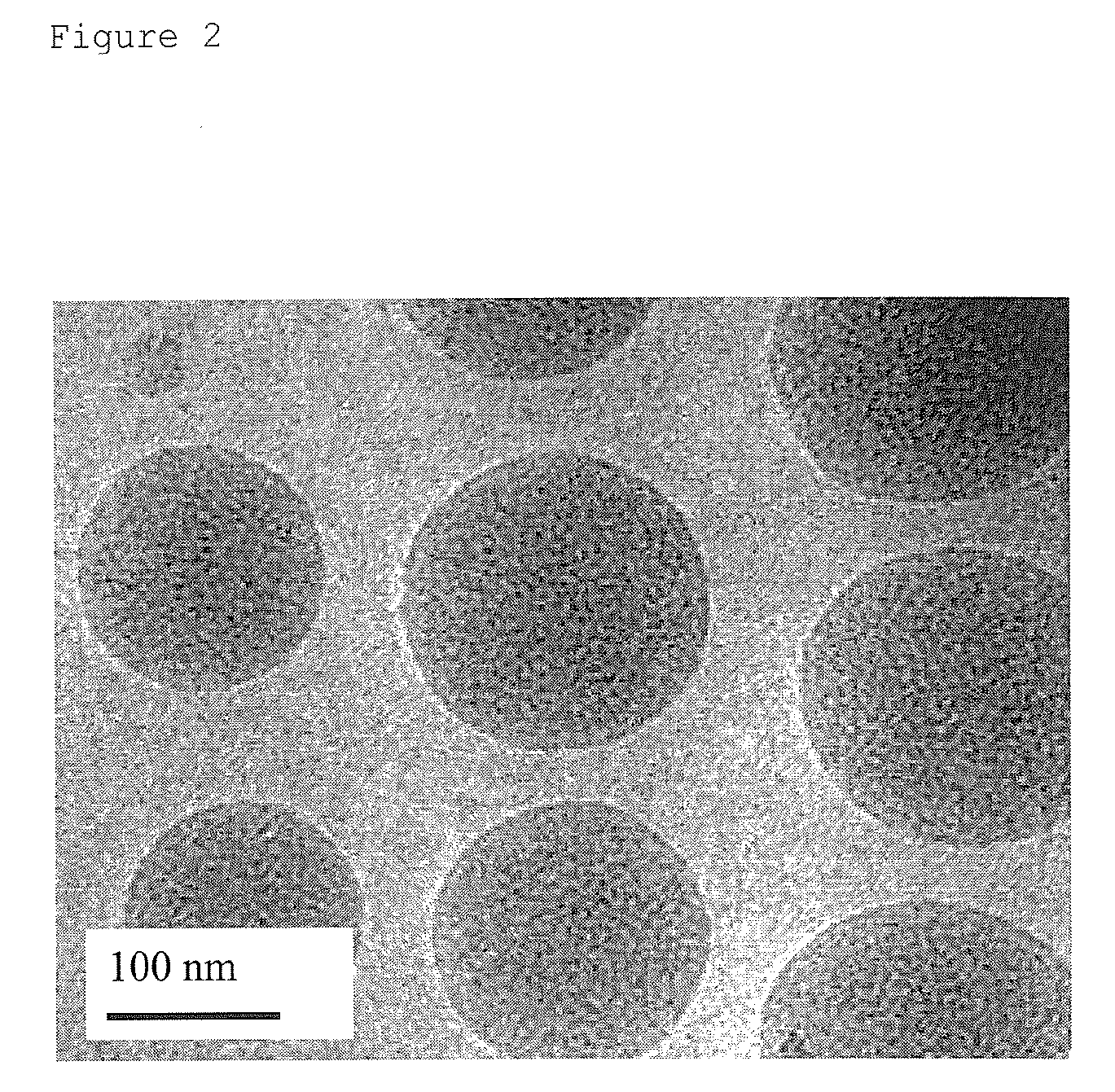Oil-In-Water Emulsion and Its Use for the Delivery of Functionality
a technology of oil-in-water emulsion and functional delivery, which is applied in the direction of deodrants, medical preparations, and infections, and can solve the problems of general turbidity and thermodynamic instability
- Summary
- Abstract
- Description
- Claims
- Application Information
AI Technical Summary
Benefits of technology
Problems solved by technology
Method used
Image
Examples
example 1
[0128]Generic Examples of an ISAMULSION obtained by homogenization and containing a mineral oil. This example is used to show how an ISAMULSION can be characterized and distinguished from ordinary oil in water emulsions.
[0129]Typically 1-5 wt % of a mineral oil, such as tetradecane, was added to 95 wt % water containing already 0.375 wt % of the hydrophilic emulsifier (Tween 80, Merck or Pluronic F127, BASF). 0.5-4 wt % LPA (glycerol monolinoleate, emulsifier TS-PH 039, Danisco, Norway) was then added to the mixture. The total amount of lipophilic molecules (mineral oil +LPA) was 4.625 wt %.
[0130]Ultrasonication was then carried out for 20 minutes. The ISAMULSION character of the emulsions was confirmed by cryo-TEM images and SAXS curves such as the ones of FIG. 2 and FIG. 3-4. FIG. 2 and FIG. 3 were obtained from those generic examples with a composition of 2.4 wt % mineral oil (tetradecane)-2.2 wt % LPA-0.375 wt % hydrophilic emulsifier (pluronic F127)-95 wt % water. In addition, ...
example 2
ISAMULSIONS Using a Triglyceride Oil
[0133]This example is used to show how an ISAMULSION from the present invention can be characterized.
[0134]0.5-4.5 wt % of soybean oil was mixed with 0.5-4 wt % LPA (Dimodan U / J, Danisco, Denmark). This mixture was added to 95 wt % water containing 0.375% of the hydrophilic emulsifier (Pluronic F127). The total amount of lipophilic molecules (oil +LPA) was 4.625 wt %.
[0135]The mixture was sheared using a Polytron (Kinematica, Switzerland) position 5 for five minutes.
[0136]The ISAMULSION character of the emulsions was confirmed by cryo-TEM images (FIG. 6a), SAXS (FIG. 7a) and examination of the corresponding bulk samples (as it was done for example 1). FIGS. 6a-7a were obtained from those generic examples with a composition of 1.525 wt % triglyceride oil-3.1 wt % LPA-0.375 wt % hydrophilic emulsifier (pluronic F127)-95 wt % water. No internal structure is observed inside ordinary soybean oil droplets, e.g. in the absence of LPA (FIGS. 6b-7d).
[0137]...
example 3
[0138]ISAMULSIONS which contain mixtures of several LPAs. This example is used to show how an ISAMULSION can be characterized.
[0139]An ISAMULSION containing a mixture of a saturated and unsaturated monoglyceride:
[0140]0-1.8% mineral oil (tetradecane) was added to 0.2-2% LPA. The LPA was a mixture of saturated monoglycerides (Dimodan HR, (saturated monoglycerides containing 90% of glycerol monostearate), Danisco, Denmark) and unsaturated monoglycerides (Dimodan U / J, Danisco, Denmark). The total amount of lipophilic molecules (Oil+LPA) was 3%. The mixture was added to 96.7% water containing 0.3% Tween 80 as hydrophilic emulsifier. Ultrasonication was carried out for 2 minutes. As indicated by the pseudo binary phase diagram of the saturated monoglyceride (Dimodan HR)-unsaturated monoglyceride (Dimodan U / J) mixture obtained at 20% water (FIG. 8), the formation of a stable L2 phase can be obtained at high temperatures after addition of the saturated monoglyceride to the unsaturated mono...
PUM
| Property | Measurement | Unit |
|---|---|---|
| diameter size | aaaaa | aaaaa |
| diameter | aaaaa | aaaaa |
| temperature | aaaaa | aaaaa |
Abstract
Description
Claims
Application Information
 Login to View More
Login to View More - R&D
- Intellectual Property
- Life Sciences
- Materials
- Tech Scout
- Unparalleled Data Quality
- Higher Quality Content
- 60% Fewer Hallucinations
Browse by: Latest US Patents, China's latest patents, Technical Efficacy Thesaurus, Application Domain, Technology Topic, Popular Technical Reports.
© 2025 PatSnap. All rights reserved.Legal|Privacy policy|Modern Slavery Act Transparency Statement|Sitemap|About US| Contact US: help@patsnap.com



